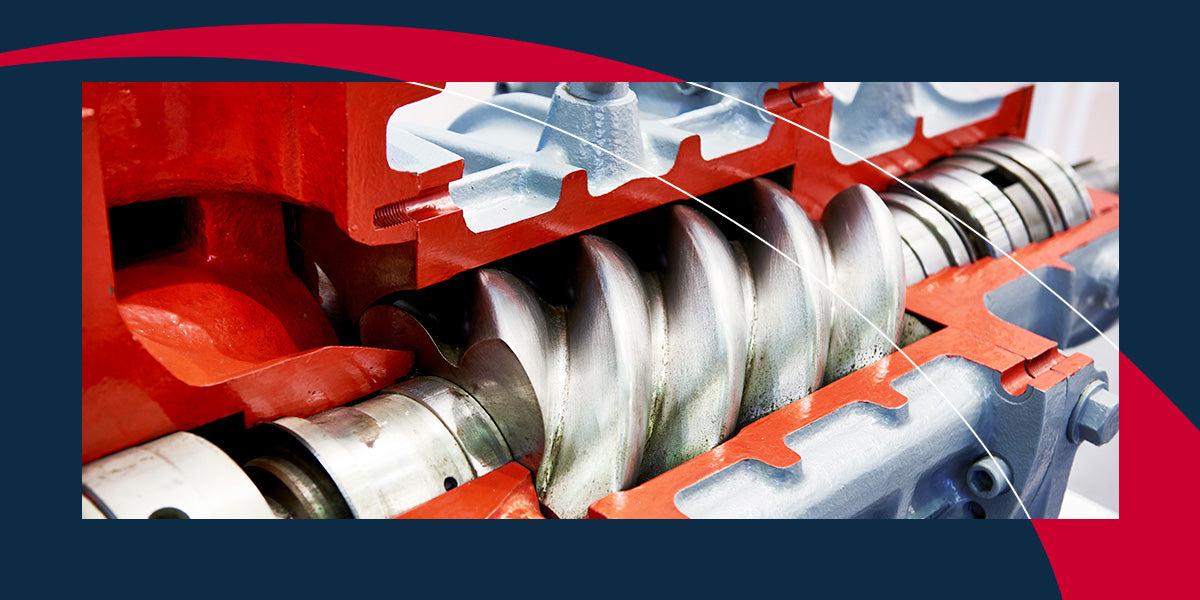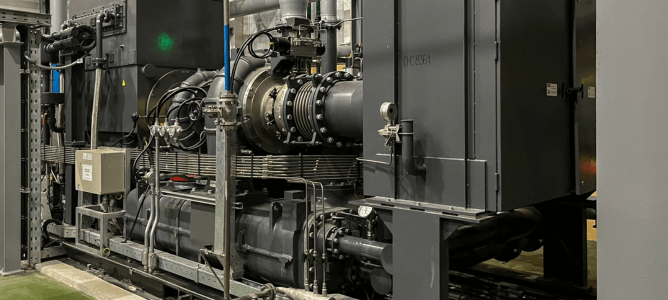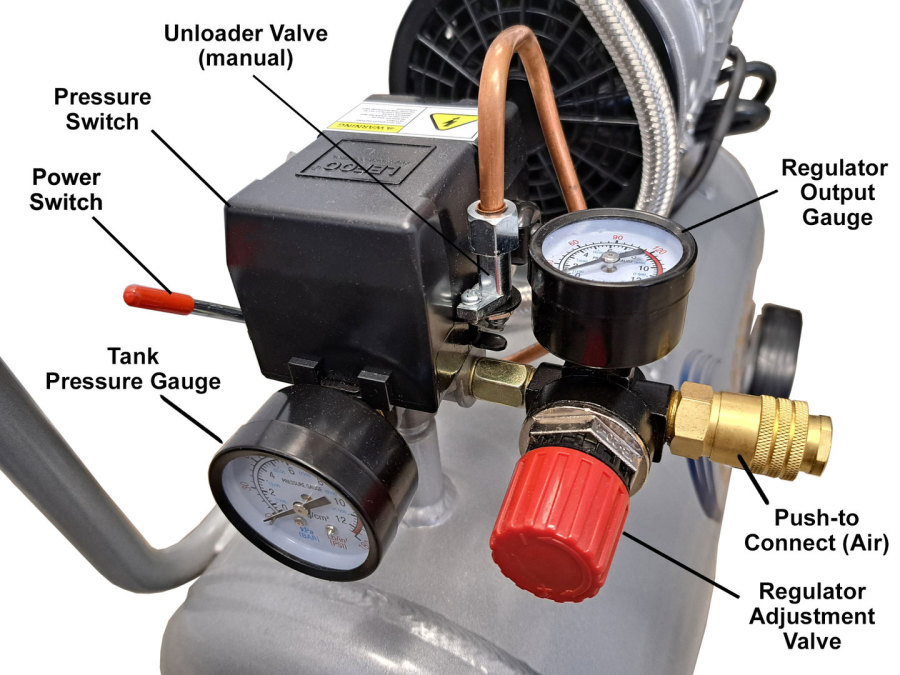Drain your air compressor tank daily to prevent moisture buildup. Regular maintenance ensures longevity and efficiency.
Proper maintenance of your air compressor is crucial for its performance and lifespan. Draining the tank daily helps prevent rust and corrosion caused by moisture accumulation. Regularly inspecting and cleaning the compressor can also prevent costly repairs and downtime. Keeping the air filters clean and ensuring all components are in good working order will maximize efficiency.
By following a consistent maintenance routine, you ensure that your air compressor operates smoothly and reliably. This guide will cover essential tips and practices for maintaining your air compressor, helping you get the most out of your equipment.
Importance Of Draining
Draining your air compressor tank is crucial. It ensures your compressor runs efficiently. Draining removes moisture, which can damage your compressor. Regular draining keeps your equipment in top shape.
Preventing Moisture Buildup
Moisture buildup can harm your compressor. When air is compressed, moisture forms. This moisture can cause rust and corrosion. Draining the tank removes this harmful moisture. It keeps your compressor clean and dry.
- Prevents rust
- Avoids corrosion
- Keeps air clean
Water in the tank can freeze in cold weather. This can lead to cracks and leaks. Regular draining prevents these issues. It ensures smooth operation all year round.
Extending Compressor Life
Regular maintenance extends the life of your compressor. Draining the tank is a key part of this. A well-maintained compressor lasts longer. It performs better and saves you money on repairs.
| Maintenance Task | Frequency |
|---|---|
| Drain Tank | Daily |
| Check Oil Level | Weekly |
| Clean Air Filter | Monthly |
Follow a regular maintenance schedule. It keeps your compressor in peak condition. Proper care helps avoid costly breakdowns. It ensures your compressor serves you well for years.
Signs Your Tank Needs Draining
An air compressor tank needs regular maintenance to perform efficiently. One crucial task is draining the tank. Ignoring this can lead to serious problems. Here are some signs your tank needs draining:
Visible Water Accumulation
Check for visible water accumulation inside the tank. Water buildup is a clear sign the tank needs draining. Moisture gets into the tank during air compression. Over time, this moisture accumulates, forming water puddles. To inspect, open the drain valve and look for water flow. If you see water, it’s time to drain the tank.
Decreased Performance
Another sign is a decrease in performance. Water in the tank can reduce air pressure. This leads to decreased efficiency and output. Your tools may not work as well. If you notice a drop in performance, check the tank for water. Draining it can restore optimal performance.
| Signs | Actions |
|---|---|
| Visible Water Accumulation | Open drain valve, check for water, and drain if needed |
| Decreased Performance | Inspect tank for water, drain to restore efficiency |
Recommended Drainage Frequency
Properly draining your air compressor tank ensures its longevity and performance. The frequency of drainage depends on how often you use your air compressor. Follow these guidelines to keep your equipment running smoothly.
Daily Usage
If you use your air compressor daily, drain the tank every day. Moisture builds up quickly. Daily drainage prevents rust and damage. Make it a part of your daily maintenance routine.
Weekly Usage
For those who use their air compressor weekly, drain the tank once a week. This schedule is sufficient to remove accumulated moisture. Regular drainage avoids long-term issues.
| Usage Frequency | Recommended Drainage |
|---|---|
| Daily | Every day |
| Weekly | Once a week |
- Daily Usage: Drain the tank daily.
- Weekly Usage: Drain the tank weekly.
By following these guidelines, you ensure the longevity of your air compressor. Regular maintenance is key to keeping your equipment in top shape.
Tools And Equipment Needed
To properly drain your air compressor tank, you need the right tools and equipment. Using the correct items ensures safety and efficiency. Below are the essential tools and equipment required for this task.
Drain Valve
The drain valve is crucial for removing moisture from the tank. Make sure you have a reliable and easy-to-operate drain valve. Here are some key points:
- Check the valve for wear and tear.
- Ensure it opens and closes smoothly.
- Replace if it’s leaking or hard to turn.
Safety Gear
Wearing the right safety gear protects you from potential hazards. Here’s a list of essential safety items:
- Safety glasses to protect your eyes from debris.
- Gloves to shield your hands from sharp edges.
- Ear protection if your compressor is loud.
Ensuring you have the right tools and safety gear makes the task straightforward. Follow these guidelines to maintain your air compressor tank effectively.
Step-by-step Draining Process
Draining your air compressor tank regularly is crucial. This process prevents rust and prolongs the machine’s lifespan. Follow this step-by-step guide to drain your air compressor tank effectively.
Turning Off The Compressor
First, turn off the air compressor. Ensure it is unplugged from the power source. This step is essential for your safety. Allow the compressor to cool down before proceeding.
Opening The Drain Valve
Locate the drain valve at the bottom of the tank. Use a wrench if needed. Turn the valve slowly to release the air and moisture. Place a container under the valve to catch water.
Keep the valve open until all moisture drains out. This process may take a few minutes. Be patient and ensure the tank is completely empty.
| Step | Description |
|---|---|
| 1. Turn Off | Turn off and unplug the compressor. |
| 2. Cool Down | Allow the compressor to cool. |
| 3. Open Valve | Slowly open the drain valve. |
| 4. Drain | Let all moisture drain out. |

Safety Precautions
When maintaining your air compressor, safety precautions are crucial. Understanding and following these precautions ensures a safe working environment. Below are some important safety measures to consider.
Avoiding Burns
Air compressors get very hot during use. Always avoid touching the tank, motor, and other parts right after use. Wait for the unit to cool down before performing any maintenance. Wearing protective gloves can also help prevent burns.
Proper Ventilation
Always operate your air compressor in a well-ventilated area. Proper ventilation prevents the buildup of harmful fumes. Make sure the compressor is not confined to a small, enclosed space.
Ensure the area is free from flammable materials. This reduces the risk of fire hazards. Keep the compressor at least 12 inches away from walls to allow for adequate airflow.
| Safety Measure | Reason |
|---|---|
| Wear Protective Gear | Prevents burns and injuries |
| Ensure Proper Ventilation | Avoids buildup of fumes |
| Keep Area Free of Flammable Materials | Reduces fire risk |
| Allow Unit to Cool Down | Prevents burns |
Common Mistakes To Avoid
Maintaining an air compressor is essential for its longevity. Avoid common mistakes to ensure it runs smoothly. Let’s explore some frequent errors users make.
Ignoring Regular Maintenance
Regular maintenance is crucial for an air compressor. Ignoring it can lead to major issues. Here are some critical points to remember:
- Check the Oil Level: Always ensure the oil level is adequate.
- Change the Air Filters: Clogged filters reduce efficiency and can damage the unit.
- Inspect Belts and Hoses: Worn-out belts and hoses can cause leaks.
- Drain the Tank: Moisture build-up can lead to rust and damage.
Set a schedule for these tasks. Stick to it to keep your compressor in top shape.
Using The Wrong Tools
Using incorrect tools can damage your air compressor. It’s vital to use the right equipment.
| Task | Right Tool | Wrong Tool |
|---|---|---|
| Removing Bolts | Proper Wrench | Improvised Tools |
| Checking Pressure | Pressure Gauge | Visual Inspection |
| Cleaning Filters | Air Blower | Water or Cloth |
Using the right tools ensures the job is done correctly. It prevents potential damage to the compressor.

Long-term Maintenance tips
Ensuring your air compressor runs smoothly requires consistent maintenance. Long-term care helps prolong its lifespan. Here are some essential tips.
Regular Inspections
Inspect your air compressor regularly. Check for any visible wear or damage. This helps catch issues early. Look for oil leaks, rusty parts, and loose bolts.
- Examine the hoses for cracks or splits.
- Check the air filter for dirt and debris.
- Inspect the electrical connections for corrosion.
Professional Servicing
Schedule professional servicing at least once a year. A trained technician can perform a thorough check-up. They can identify and fix problems you might miss.
| Service | Frequency |
|---|---|
| Oil Change | Every 3 months |
| Filter Replacement | Every 6 months |
| Full Inspection | Annually |
Keeping up with these long-term maintenance tips ensures your compressor runs efficiently. Regular inspections and professional servicing are key. Follow these steps for a reliable air compressor.

Frequently Asked Questions
How Often Should I Drain My Air Compressor Tank?
You should drain your air compressor tank daily or after each use. This prevents moisture buildup, which can cause rust and damage to the tank.
What Happens If I Don’t Drain The Air Compressor Tank?
If you don’t drain the tank, moisture can accumulate. This leads to rust and potential failure of the tank, reducing its lifespan.
How Do I Properly Drain My Air Compressor Tank?
To properly drain your air compressor tank, turn off the compressor. Open the drain valve at the bottom and let the moisture out.
Why Is Air Compressor Maintenance Important?
Regular maintenance ensures your air compressor runs efficiently. It extends its lifespan and prevents costly repairs. Proper care includes draining the tank and checking for leaks.
Conclusion
Regularly draining your air compressor tank ensures optimal performance and longevity. Follow the maintenance tips outlined for best results. Consistent care helps prevent rust and damage. Keep your compressor in top shape by making these practices a routine. A well-maintained compressor will serve you efficiently for years.

